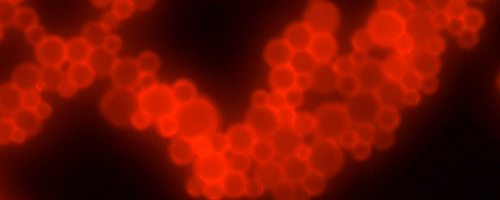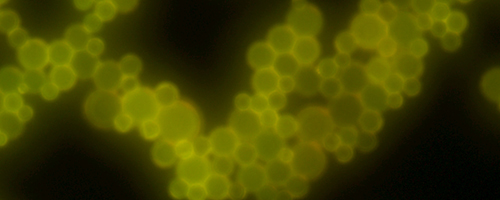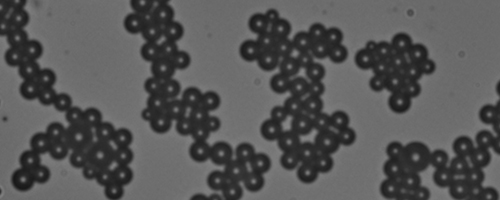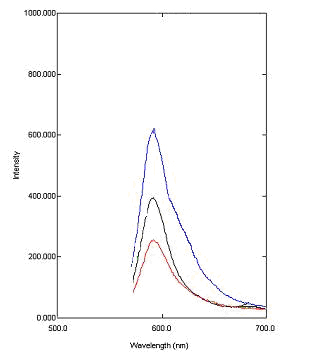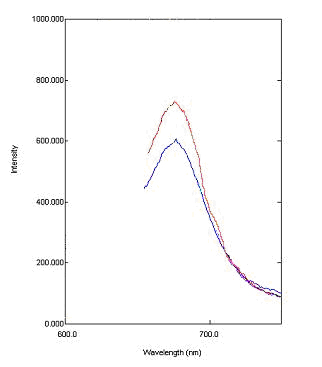Fluorochrome UniMF Microsphere
Description
Microsphere Composition: Melamine-Formaldehyde Resin
Fluorescent Composition: 1. Nile Blue A (red
fluoreccence; Excitation/Emission=636/686nm)
2. Rhodamine B (orange fluorescence;
Excitation/Emission=550/584nm)
3. Rhodamine 6G
Form : Aqueous dispersion or Dry powder
Approximate Concentration (W/V): 5% or 10% solids
Sodium Azide Concentration :
50 ppm
Surfactant : <0.1% (W/V) or None
Physical Data
Nominal Diameter(micron) : 6, 8, 13,
50
Density : 1.51 g/cm3
Refractive Index: 1.68 @ 589 nm,
25℃
Physical and Chemical Properties
Hydrophilic surface, possess many functional groups on the surface (methylol groups, amino groups), which can be used for a covalent attachment of other ligands; High cross linking density, High temperature stability up to
300℃; Superior mechanical strength; Stable in acids and bases; Extremely high stability in organic solvents, no swelling or shrinking upon contact with organic solvents; Soluble in organic solvents like benzene, halogenated hydrocarbons, or acetone; Reduced non-specific protein binding activity.
Fluorescence Microscopy Image
Rhodamine B labeled MF microsphere
Green light excitation
Blue light excitation
Nile Blue A labeled MF microsphere
BRI (white light)
Green light excitation
Fluorescence Emission Spectra of Microsphere
Rhodamine B Nile Blue A
Storage and Handling
Aqueous dispersions of melamine resin particles have excellent stability. Storage at room temperature is possible without bacterial growth. Particles can be washed with alcohol, air dried and autoclaved. Dried particles can be redispersed in water without any agglomeration. Dispersions of MF particles can be frozen.
Application
1. MF particles find wide applications as model systems in medicine, biochemistry, colloid chemistry, and aerosol research;
2. The fluorescent particles can be used as standards (e.g. in flow cytometry, confocal laser scanning microscopy, light scattering instruments) as well as tracers in environmental science, flow measurements in gases and liquids like Laser Doppler Anemometry (LDA), Particle Dynamics Analysis (PDA), Particle Image Velocimetry (PIV), Digital Imaging Velocimetry (DIV) and Laser Speckle Velocimetry (LSV); In applications with a high background light level, fluorescent seeding particles can significantly improve the quality of vector maps from PIV and LDA measurements.
2.1 Single-phase liquid flows -The enhancement of image contrast is beneficial for most PIV applications even for simple liquid flows in order to improve the measurement accuracy.
2.2 Multi-phase flows -Bubbly flows and droplet flows etc.
2.3 Industrial large-scale flows-Mixing tank and filtering flows etc.
2.4 Stereo PIV -The emission of fluorescence is independent on the viewing angle unlike the Mie scattering. The intensity difference often seen between cameras can be minimized, leading to enhance the accuracy of Stereo PIV.
2.5 Micro PIV
2.6 Near-wall flows
